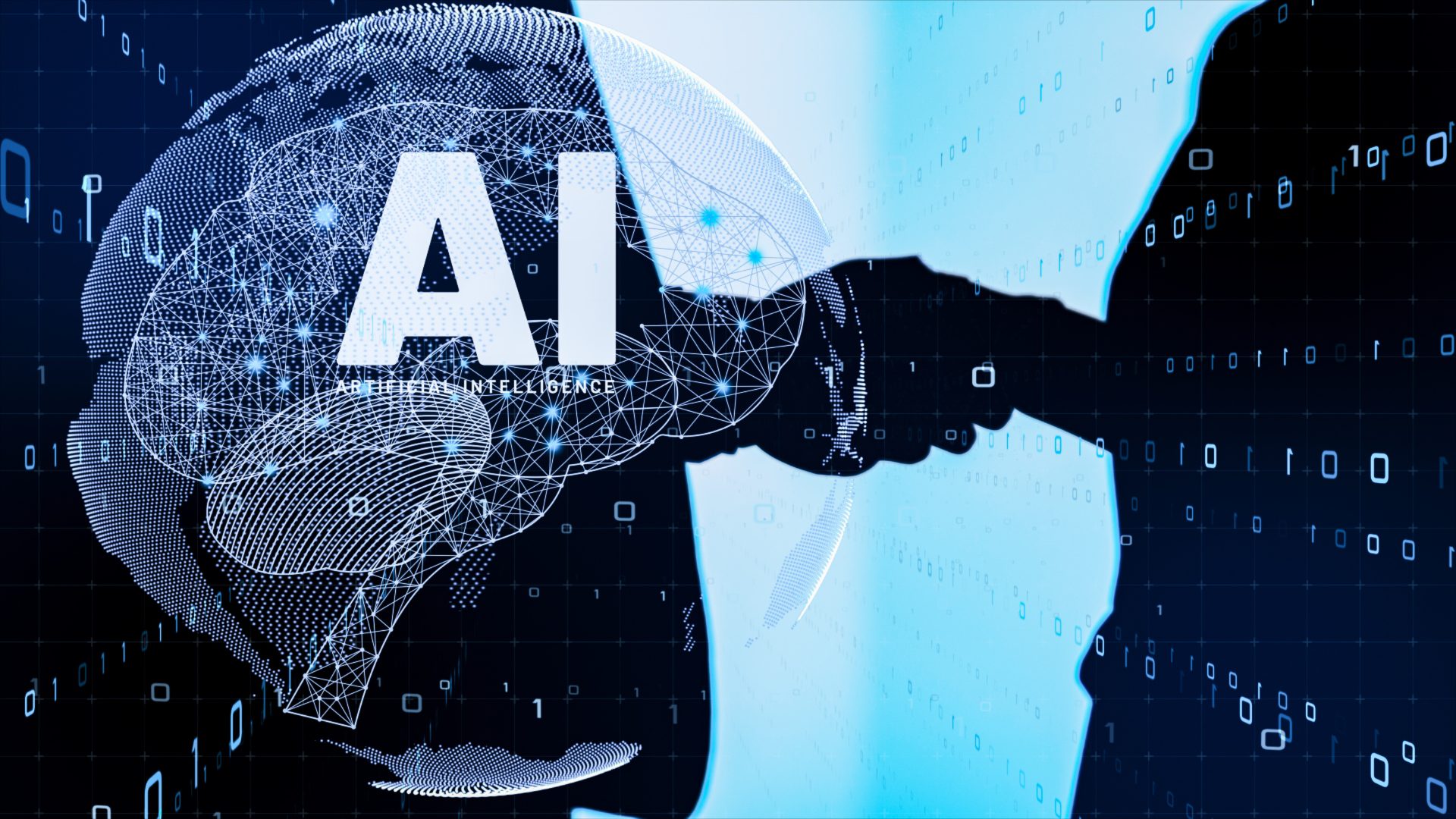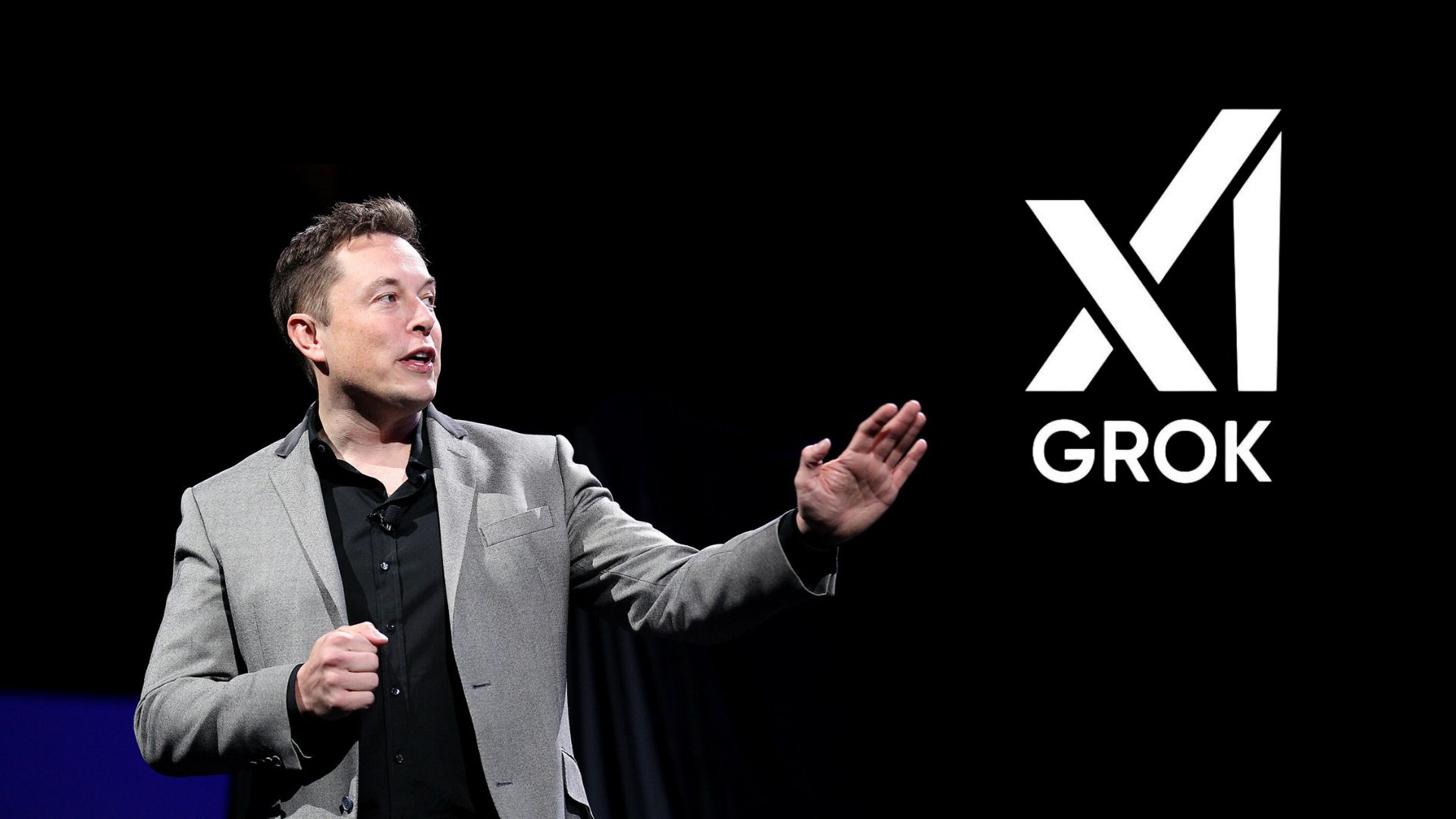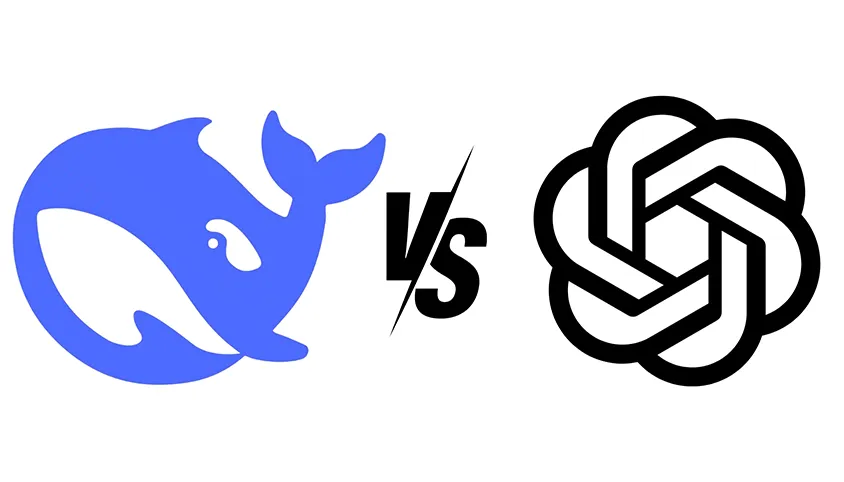
The content creation industry has constantly evolved with technology, but 2025 is proving to be a landmark year, thanks to Generative AI. A technology that has moved beyond merely simple automation to a creative powerhouse has turned the tables on how storytelling, marketing, and audience engagement are approached. For any writer, marketer, or business owner, Generative AI is the way to stay in the game.
Let’s understand and move into how Generative AI, AI in content, and creative AI are changing content creation and marketing forever.
What is generative AI?
Generative AI refers to any artificial intelligence model that allows the generation of new content. Unlike the old kind of AI, which simply predicts or classifies based on learnt data, generative AI produces something completely new, such as articles, videos, images, or even music. ChatGPT, DALL·E, and Jasper AI are just some examples of how Generative AI is enabling a myriad of new applications in innovative content creation.
The increase in generative AI in 2025 is because it “thinks” “creatively.” These machines learn styles, patterns, and contexts to generate outputs that are often indistinguishable from the creativity of humans.
Why Generative AI Matters in Content Creation?
- Speed Meets Quality
Creating engaging, high-quality content has always been time-consuming. Whether blogging, crafting social media posts, or designing ads, the manual effort adds up. With AI in content, this kind of task that once would have taken hours or days can now be completed in a few minutes.
For example:
With Jasper AI, a content marketer can produce an SEO-friendly draft for a blog within an hour.
Designers can make ad banners or logos using creative AI-powered platforms, such as Canva or Adobe Firefly.
Result? Content creation at warp speed without losing quality.
- Tailor-made Content for Every Audience
Audiences expect personalization by 2025. All that general content is out of use. That’s where the magic of marketing automation with generative AI happens.
Brands using AI can do the following:
- Craft hypertargeted emails.
- Personalized website landing pages to people from different demographics.
- Product recommendation for individual users.
This level of personalization ensures higher engagement and conversions, making AI in content an essential tool for businesses.
- Empowering Creative Teams
Contrary to fears that AI might replace humans, generative AI enhances creativity. It takes care of repetitive tasks, freeing up creative teams to focus on strategy and storytelling.
For example:
Writers can use AI-generated drafts as a foundation, adding a human touch to refine the message.
Designers can use AI for developing templates or even mood boards for campaigns.
Human creativity mixed with creative AI offers limitless possibilities.
Real-World Applications of Generative AI in 2025
- Blog Writing and Content Marketing
Tools like ChatGPT are transforming the way blogs are written. A marketer can generate ideas, outlines, or even complete drafts using AI in content. These tools understand SEO trends, ensuring that the content ranks high on search engines.
- Social Media Content
Social media thrives on fresh, engaging content. Generative AI creates captions, hashtags, and even viral video ideas created for specific platforms like Instagram, TikTok, and LinkedIn.
- Video and Image Designing
New platforms like DALL·E and Runway ML are changing the face of visual storytelling. Businesses can design customized graphics, mock a product, or even create an entire video ad in hours rather than in weeks.
- Email Marketing
Generative AI writes personalized email subject lines, body text, and CTAs through marketing automation. This helps increase open rates and engagement, effectively connecting brands to audiences.
The Role of Generative AI in Marketing Automation
Marketing automation is by no means new; however, in 2025, Generative AI is taking it to the next level.
Here’s how:
- Content Generation: AI writes blog posts, ad copies, and landing page content.
- Data Insights: Generative AI analyzes user behavior to predict trends and recommend strategies.
- Campaign Optimization: AI tools test various ad or email variations so that the most efficient ones are used.
By integrating Generative AI into marketing automation, brands can deliver campaigns that resonate with their audience while saving time and resources.
Challenges in Adopting Generative AI
The advantages are enormous, but the adoption of generative AI is not problem-free.
- Quality Control: The content done through AI isn’t always perfect. It requires human oversight to ensure it aligns with brand values.
- Ethical Concerns: With plagiarism and misinformation, ethics surrounding AI and content creation have been a hot topic.
- Learning Curve: Businesses need to invest time in understanding and implementing AI tools effectively.
Despite these obstacles, the capabilities of creative AI far outweigh the hindrances.
The Future of Generative AI in Content Creation
This is just the start of the journey of Generative AI. Its impact on industries such as marketing, entertainment, and education has already become transformative by 2025. The future projections include:
- More Human-Like AI: AI models will only continue to improve, creating content indistinguishable from what humans produce.
- Seamless Integration: The tools will integrate deeper into the workflows so that teams can use them even better.
- New Opportunities: Generative AI will allow new forms of content-a mix of other things-like interactive stories and virtual experiences.
How Businesses Can Embrace Generative AI?
For businesses looking to stay ahead, here are actionable steps:
- Invest in the Right Tools: Good starting points begin with platforms like Jasper AI, DALL·E, and Writesonic.
- Train Your Teams: Equip your teams with the skills to use generative AI effectively.
- Experiment and Iterate: Test AI-generated content, get their feedback, and refine your approach.
The trick here is to treat AI as a partner, not a replacement, when working on content.
Conclusion
The age of Generative AI is here and with it changing the way we think about content-from writing to design, from marketing to storytelling. AI enables content creation that is faster, smarter, and more personalized.
With the help of AI-driven tools in content, business can exploit new levels of efficiency and creativity. Though challenges abound, opportunities outweigh them. In 2025, working with Generative AI is not a choice; it’s a necessity to take anything seriously in terms of content creation and marketing.
So, are you ready to explore the power of creative AI? Let’s dive in and find a world where innovation meets imagination.
This blog is designed to inspire and inform marketers, businesses, and creators about the future of content creation. Visit Right Firms to explore top Generative AI tools and services for elevating your content strategy.
Submit Your Inquiry
Related Posts

Dec 2024
5 Essential Features Every eCommerce Site Needs
Building an eCommerce website is like setting up a physical store in a digital world. The difference? Your "storefront" must attract and engage visitors 24/7. To succeed, your site must have features that create an excellent customer experience, build trust, and make shopping seamless. In this blog, we’ll walk through five eCommerce features that every online store needs to thrive. Whether you're starting from scratch or looking to improve your website, these essentials will be your map towards success. 1. Mobile-Friendly Design: The Non-Negotiable In 2025, more than half of all eCommerce sales are made on mobile. A mobile-friendly design isn't nice to have, it's necessary. Your website needs to scale with screens of all shapes and sizes so that the visitor can browse, add products to their cart, and check out easily on his phone. Here's why: A better user experience: Buyers stay longer and navigate deeper. SEO benefit: Search engines reward mobile-friendly sites. More conversions: Seamless mobile experience translates directly into more sales. Use responsive design methodologies, and test your website on different devices. This means you won't miss out on sales because of a site that lacks great mobile functionality. 2. Intuitive Navigation: Guiding Customers Seamlessly Walk into a store without signs or directions. Frustrating, right? Your online store is not any different. Intuitive navigation ensures shoppers find what they're looking for without confusion. Online store essentials for reaching the correct landing page include: A clear menu with well-defined categories. A powerful search bar for quick product discovery. Breadcrumb trails so users can retrace their steps easily. Pro tip: Categorize your products to make sense logically. For instance, if you are selling shoes, you categorize them into men's, women's, and kids'. Intuitive navigation improves customer experience and keeps users from leaving in frustration. 3. Secure Payment Options: Building Trust Safety will always be a top concern of e-commerce buyers. Online consumers require feeling secure over the sensitivity of their information. This confidence through safe payment solutions develops trust and boosts conversion rates. So, what's most important: Apply SSL certificates to your users' data. Have easy-to-spot payment brands including Visa, PayPal, Stripe Variety in payments, that would involve credit cards, e-wallets, Buy Now Pay Later. You should also display trust badges on your checkout page. These visual indicators help reassure the customer that their transactions are safe and reduce the rates of cart abandonment. 4. A User-Friendly Shopping Cart and Checkout Process This is where visitors become buyers. All your hard work can be undone if your shopping cart and checkout process are clunky or confusing. Optimize this step with these eCommerce features: A persistent cart that saves items for later. Clear pricing with no hidden fees. Guest checkout options for faster purchases. Make sure there is an ease in editing the cart, applying discounts, and shipping options. The simpler it is, the less likely the user will drop the cart. 5. Search Engine Optimization (SEO): Getting Found Online Even the best-designed site is worthless if nobody finds it. SEO helps you get more visitors by ranking higher in search engine results. It's a game-changer for eCommerce. Focus on these areas: Keyword optimization: Use terms like "affordable sneakers" or "eco-friendly bags" in your product descriptions. High-quality product pages: Write detailed descriptions, use clear images, and include customer reviews. Voice search readiness: Adapt to how people speak when searching, such as "best running shoes under $50." Stay updated on trends like AI-powered search and Core Web Vitals, as they directly impact your visibility. A well-optimized site ensures consistent organic traffic, reducing your dependency on paid ads. Wrapping Up These are the five eCommerce features of an excellent online store: Mobile-friendly design. User-friendly navigation. Secure payment options. Convenient shopping cart and checkout. Strong SEO practices. Each plays a part in adding more ease to the experience of your customer and selling them. Creating the perfect online store is a process by focusing on online store essentials rather than just building a website. For more information about optimizing an eCommerce website, go to Right Firms for the best developers and digital gurus on the net.

Nov 2024
A Guide to Finding the Best Digital Marketing Agencies
Digital marketing works well for the brand's visibility, customer engagement, and total growth in the world of cutthroat-throat competition for business. However, effective marketing results are only effective when they can provide expertise, innovation, and strategy for impact, which only a little experience can provide. Whether you're a startup aiming to multiply or an established business wanting to boost your online presence, finding the right agency is a big deal. Here's a simple guide to help you make the best choice of digital marketing agency for you. How to Find the Best Digital Marketing Agency Digital marketing is key to making your brand stand out. It helps you connect with customers and grow your business. But not all marketing efforts are the same. To get results, you need a team that knows what they’re doing, can think outside the box, and has a clear plan. Why You Need a Digital Marketing Agency The online world changes all the time. So do the ways people shop and interact with brands. Keeping up can be tough without the right help. Here’s why teaming up with a marketing agency is a smart move: Expert Advice: They know all the ins and outs of SEO, social media, content marketing, and paid ads. Better Tools: Agencies use advanced tools to track and improve your campaigns. Saves Money: Hiring an agency can cost less than building a team in-house. More Focus for You: Let them handle marketing while you focus on running your business. Steps to Choose the Right Agency 1. Know Your Goals What are your goals? What do you want to achieve? Do you need more website traffic, better engagement on social media, or more leads? Having clear goals helps you find an agency that fits your needs. Short-Term Goals: Like promoting a new product or running a holiday campaign. Long-Term Goals: Like growing your brand or expanding into new markets. 2. Look at the past Experience of Agency Check if the agency has worked with businesses like yours. A team that knows your industry will understand your audience and challenges better. Here’s what to look for: How long they’ve been in the business. Success stories or case studies. Reviews from other clients. For example, some agencies, like Obelisk Infotech, have over 20 years of experience and have worked with thousands of clients worldwide. Start Your In-house Search By figuring out what you need and checking out an agency’s experience, you’ll be on the right track to finding a marketing partner that can help your business grow. 3. Evaluate Their Marketing Practices A good agency will employ innovative marketing strategies that align with your goals. Questions to ask during the consultation include: How do they approach SEO and content marketing? What tools and methods do they use for audience analysis? How do they measure campaign success? A combined strategy, creativity, analytics, and technology approach determines effective digital growth. 4. Evaluate Their Online Profile A credible agency should also have a good online presence. Look at their website, blog contents, and social media pages. This may provide insight into their skills, brand identity, and communication approach. Website Design: Is the website functional and more so optimized? Content Quality: Are they generating high-value and SEO-friendly content? Social Media Activity: Is it an engaged community? 5. Know Their Pricing Structure Digital marketing agencies usually charge differently depending on the scope, expertise, and services. Among the most common three pricing structures are: Hourly Rates: This applies mostly to one-time consultations or small projects. Monthly Retainers: More suitable for ongoing marketing needs. Project-Based Pricing: Suitable mostly for specific campaigns such as website redesign or a product launch. Compare several agencies to ensure their services fit your budget while providing the expected ROI. 6. Evaluate Communication and Transparency Effective communication is vital for a successful agency partnership. During your initial interaction, assess how transparent they are in their processes. Ensure they: Provide regular progress updates. Use accessible tools for campaign tracking. Encourage feedback and collaboration. Qualities of a Grade-A Digital Marketing Agency Ultimately, discovering the best agency may be understood by appreciating qualities that distinguish top performers. Here are qualities to look for: Innovative Thinking Creativity and innovation thrive in the digital space. A great agency will bring new perspectives and bold ideas to your campaigns, making them unique in a sea of competition. Data-Driven Approach The best agencies rely on data analytics to inform their marketing strategies. They analyze metrics like website traffic, conversion rates, and customer engagement to refine campaigns and maximize ROI. Full-Service Capabilities Consider agencies offering comprehensive solutions, from SEO and social media management to PPC advertising and email marketing. This eliminates the need to work with multiple vendors. Strong Reputation Agencies that have received positive client testimonials attained awards, and are certified generally can ensure successful results. Mistakes to Avoid in Selecting a Digital Marketing Agency Cost-only Orientation Affordability is key, but purely cost-oriented can make the campaign underperform. The focus should be on value and expertise. Company Requirements Ignored Selecting an agency with consideration of whether it fits in with your objectives can lead to misaligned strategies. Always choose an agency that understands your industry and goals well. Overlooking Transparency Agencies unwilling to give simple metrics or hide their processes will be a challenge down the road. Transparency should always be adopted when partnering. How to Foster Digital Growth with the Right Agency Partnering with an effective marketing agency will drive faster digital growth through: SEO Optimization: Increased website presence through keyword research and quality content. Social Media Marketing: Utilizing these platforms to communicate with your audience and promote their engagement. Content Marketing: Defining authority through value-adding, relevant content. Performance Marketing: Measurable results through PPC, retargeting, and affiliate marketing. Through these marketing strategies, the agencies facilitate the growth of business' online presence and propel long-term success. The Future of Digital Marketing Agencies Hence, future digital marketing can be perceived as evolving under the shadow of advancements in AI, machine learning, and data analytics, with their increasing application in agencies for providing personalized experiences and ROI. Businesses need to engage with agencies that value innovation and are flexible enough to allow for the changing direction of trends. Conclusion Choosing the right digital marketing agency is a strategic decision. It has to do with how you grow your brand. That means evaluating agency expertise, defining your goals, and transparency. You can find a partner who would run with your business needs. All that, of course, has to be supported by one's supportive business, and together they shall thrive in this competitive landscape. Working with a capable agency is not outsourcing work but a collaborative relationship that comes with tangible results. Use this guide as your roadmap and make an informed decision toward the success of your business.

Nov 2024
5 Ways Branding Affects Consumer Perception of Your Business
Branded Experience in a Competitive Marketplace In a competitive marketplace, branding plays a very important role in shaping perception on the part of consumer relations with business. Branding is so much more than a logo and tag line, this encompasses the overall experience and values a company speaks about its customers. Strong branding can result in enduring impressions, trust, and even fan loyalty. This blog discusses five impactful ways branding influences consumer perception, offering action-able insights for businesses looking to build a memorable, trustworthy brand. 1. Building Brand Identity: The Foundation of Consumer Perception A brand identity is that unique visual, emotional, and cultural image that the company projects to its ideal target audience. Such elements include a logo, color scheme, style of typography, voice, and the core values of the company. Brand identity, once well crafted, will immediately associate with what is known as the personality of a business. When consumers engage with a brand, the appearance and feel of the brand overpower their minds even before they go ahead to interact with the products or services. A well-thought-out brand identity always speaks to consumers, therefore they might think they are closer to knowing the brand. For instance, most international brands such as Apple and Nike carry the image of being simple, innovative and high-quality where people believe it can be trustworthy and worthwhile to associate with. Proper consistency across all touchpoints-from the web to social media and physical spaces-only makes businesses achieve a strong brand identity. The point here is that without consistency, it cannot build a more cohesive image that will actually elevate consumer loyalty and influence buying decisions. 2. Establishing Trust and Credibility Through Consistent Branding The source of great interest and importance is that consumers tend to believe in the brands if they are consistent. Consistency in branding helped business gain credibility. When it sets an influence on a brand to be perceived as trustworthy, then consumers are bound to consider a business as reliable when the brand image aligns with consumer expectations and stays true to its promises. One of the biggest factors of consumer loyalty is trust. If a brand continues to meet or exceed expectations time and time again, then a good reputation is established, encouraging repeat buys and possibly even advocacy. Brands like Coca-Cola maintain an international consistency of message and visual identity and are thus recognized and trusted globally. By consistently delivering on its brand promise, a business reinforces its position in the consumer’s mind, which not only enhances customer trust but also cultivates a loyal customer base. 3. Creating Emotional Connections Through Branding One of the ways branding influences consumer perception is through the creation of emotional bonds. Consumers tend to choose and stick to brands they feel emotionally connected to. Emotional branding creates an interface with values, needs, and aspirations of consumers, making them believe even more that the brand understands and values them. Good examples of such emotional branding are Dove and other brands, which through building self-esteem and celebrating the diversity that exists, have been able to create a positive image. This has placed the brand in a favorable position in relation to the minds of its customers so that consumers can be emotionally tied to the brand. The results are consumer loyalty since the brand becomes 'like me'. Businesses can develop emotional branding with the involvement of the consumer on a deeper level-understanding their causes, stories, and alignment with the requirements of their consumers. In doing so, they increase brand loyalty and drive the consumer into believing that that brand is an essential part of their life. 4. Influencing Consumer Decision-Making Through Brand Differentiation Brand differentiation can be the way to edge away from competitors in a saturated market. In other words, brand differentiation will help businesses make others notice what is unique about them. Brand differentiation can influence consumer choice because it is perceived to be different in its value proposition that attracts certain consumers who want those specific attributes only it has. For example, Tesla has differentiated itself as a pioneer in the electric vehicle market with its focus on sustainable technology, high-performance, and cutting-edge designs. Consumers will perceive Tesla as being a thoughtful brand, which makes it an attractive choice for environmentally conscious buyers. For effective brand differentiation, a company should be able to identify unique selling points (USPs) and can communicate them consistently in branding efforts. This process is not only clarifying the place of the brand within the market but also making it appealing to a consumer looking for those specific qualities, showing a better consumer loyalty and perception of the brand. 5. Building Long-Term Consumer Loyalty with Brand Consistency Brand consistency is the key, and positive brand perception usually leads to long-term consumer loyalty. Moreover, creating a dependable brand image calls for consistency in terms of messaging, tone, product quality, and customer service. Consider Amazon, for instance. The brand's reliability to offer convenience, speedy service, and the services they provide has made it a reliable option for online shopping. People trust Amazon not only because of its products only but also because the experience it is showing them is constantly positive. Trust breeds loyalty, as customers are more liable to go back to a brand that will consistently meet their needs. To create consumer loyalty, the firm needs to make the brand relevant, available, and consistent across all the touch points and interactions. A positive consumer perception about the brand results when consumers perceive the quality of the brand, which eventually helps them become loyal. Conclusion Brand identity exercises its highly influential role as far as the consumer's perception and interaction with the business are concerned. More than all, it gets to a defined brand, consistency in branding, emotional connection with clear distinction, and a heightened commitment to branded values that would enhance the positive perceptions for the brands. It is in this strategic focus that it enables businesses to shape consumers' perceptions about them, builds trust and loyalty, and leads to long-term success. Understanding these principles not only helps in crafting a brand that stands out, but they also ensure that the created brand resonates with its target audience on a meaning level. In today's competitive landscape, effective branding isn't just a differentiator, but a necessity for businesses that want to create lasting relationships with consumers.







